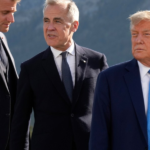Amazon’s financial outperformance stems from strong execution across several areas. Though its sprawling retail operations remain the largest part of its business, the real engine of profit growth continues to be Amazon Web Services (AWS), the company’s cloud-computing arm.
Despite ongoing concerns about tariffs and consumer spending, Amazon’s core online store sales grew 11% to $61.5 billion. The company’s third-party seller services also expanded, with revenue rising 11% to $40.3 billion. Physical stores, including Whole Foods, delivered a 7% increase to $5.6 billion, while subscription revenue—such as Prime memberships—rose 12% to $12.2 billion.
The company is navigating a complex macroeconomic climate that includes inflation, changing trade policies, and labor market constraints. Shipping expenses climbed 6% to $23.4 billion, reflecting both global cost pressures and heightened demand for fast delivery.
Although Amazon’s Q2 earnings don’t reflect the impact of July’s Prime Day—held after quarter’s end—the company remains optimistic, projecting third-quarter revenue in the range of $174 billion to $179.5 billion, above analyst expectations. Operating income is forecast between $15.5 billion and $20.5 billion.
Meanwhile, Amazon’s headcount inched up 1% year-over-year to 1.55 million, with CEO Andy Jassy signaling further workforce streamlining as automation and generative AI gain traction internally. “Our AI progress across the board continues to improve our customer experiences, speed of innovation, operational efficiency, and business growth, and I’m excited for what lies ahead,” he said in the earnings press release.
Despite the upbeat earnings report, Amazon stock fell in extended trading, illustrating Wall Street’s wariness about continued retail volatility, capital-intensive growth, and competitive dynamics in cloud and AI. Still, analysts remain bullish on Amazon’s strategic direction, citing leadership in cloud innovation, resilient retail fundamentals, and an aggressive expansion into the future of artificial intelligence.
For this story, Fortune used generative AI to help with an initial draft. An editor verified the accuracy of the information before publishing.









